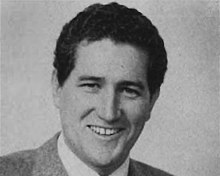
The Commodore 1581 is a 3½-inch double-sided double-density floppy disk drive that was released by Commodore Business Machines (CBM) in 1987, primarily for its C64 and C128 home/personal computers. The drive stores 800 kilobytes using an MFM encoding but formats different from the MS-DOS, Amiga, and Mac Plus formats. With special software it's possible to read C1581 disks on an x86 PC system, and likewise, read MS-DOS and other formats of disks in the C1581, provided that the PC or other floppy handles the "720 kB" size format. This capability was most frequently used to read MS-DOS disks. The drive was released in the summer of 1987 and quickly became popular with bulletin board system (BBS) operators and other users.

The Commodore 64, also known as the C64, is an 8-bit home computer introduced in January 1982 by Commodore International. It has been listed in the Guinness World Records as the highest-selling single computer model of all time, with independent estimates placing the number sold between 12.5 and 17 million units. Volume production started in early 1982, marketing in August for US$595. Preceded by the VIC-20 and Commodore PET, the C64 took its name from its 64 kilobytes(65,536 bytes) of RAM. With support for multicolor sprites and a custom chip for waveform generation, the C64 could create superior visuals and audio compared to systems without such custom hardware.
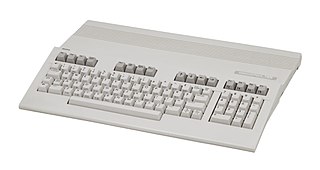
The Commodore 128, also known as the C128, C-128, or C= 128, is the last 8-bit home computer that was commercially released by Commodore Business Machines (CBM). Introduced in January 1985 at the CES in Las Vegas, it appeared three years after its predecessor, the Commodore 64, the bestselling computer of the 1980s. Approximately 2.5 million C128s were sold during its four year production run.

The Commodore Plus/4 is a home computer released by Commodore International in 1984. The "Plus/4" name refers to the four-application ROM-resident office suite ; it was billed as "the productivity computer with software built in".

Creative Micro Designs, Inc. (CMD) was founded in 1987 by Doug Cotton and Mark Fellows. It is a computer technology company which originally developed and sold products for the Commodore 64 and C128 8-bit personal computers. After 2001 it sold PCs and related equipment.

The VIC-II, specifically known as the MOS Technology 6567/6566/8562/8564, 6569/8565/8566 (PAL), is the microchip tasked with generating Y/C video signals and DRAM refresh signals in the Commodore 64 and Commodore 128 home computers.
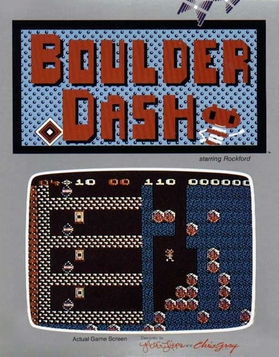
Boulder Dash is a 2D maze-puzzle video game released in 1984 by First Star Software for Atari 8-bit computers. It was created by Canadian developers Peter Liepa and Chris Gray. The player controls Rockford, who collects treasures while evading hazards.

The Commodore RAM Expansion Unit (REU) is a range of external RAM add-ons.
The Commodore 64 amassed a large software library of nearly 10,000 commercial titles, covering most genres from games to business applications, and many others.
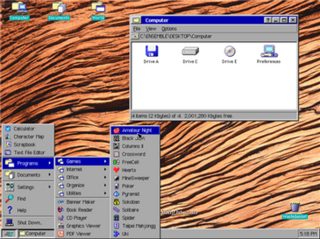
GEOS is a computer operating environment, graphical user interface (GUI), and suite of application software. Originally released as PC/GEOS, it runs on DOS-based, IBM PC compatible computers. Versions for some handheld platforms were also released and licensed to some companies.
BASIC 8 – "The Enhanced Graphics System For The C128" – was an American-designed graphics system developed by Walrusoft of Gainesville, Florida and published in 1986 by Patech Software of Somerset, New Jersey. The system was an extension of Commodore's BASIC 7.0 for the C128 home/personal computer. BASIC 8.0 provided commands lacking in BASIC 7.0 to generate (color) graphics in the C128's high-resolution 80-column mode for RGB monitors.

GEOS is a discontinued operating system from Berkeley Softworks. Originally designed for the Commodore 64 with its version being released in 1986, enhanced versions of GEOS later became available in 1987 for the Commodore 128 and in 1988 for the Apple II series of computers. A lesser-known version was also released for the Commodore Plus/4.

Tynesoft Computer Software was a software developer and publisher in the 1980s and early 1990s.
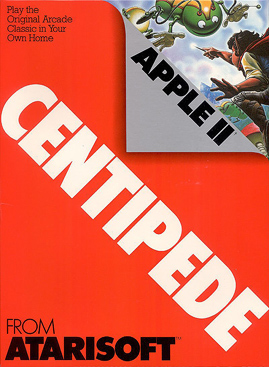
Atarisoft was a brand name used by Atari, Inc. in 1983 and 1984 to publish video games for non-Atari home computers and consoles. Each platform had a specific color for its game packages: video games sold for the Commodore 64 were in green boxes, games for the TI-99/4A in yellow, the IBM PC in blue, and so on.

The Commodore 64 home computer used various external peripherals. Due to the backwards compatibility of the Commodore 128, most peripherals would also work on that system. There is also some compatibility with the VIC-20 and Commodore PET.

geoPublish is a discontinued desktop publishing program made by Berkeley Softworks for their GEOS Operating System.

CURSOR: Programs for PET Computers was an early computer-based "magazine" that was distributed on cassette from 1978 and into the early 1980s. Each issue, consisting of the cassette itself and a short newsletter including a table of contents, contained programs, utilities, and games. Produced for users of the Commodore PET, and available by subscription only, CURSOR was a forerunner of the later disk magazines ("diskmags") that came about as floppy disk drives became common, and eventually ubiquitous, in home and personal computing during the 1980s.

Berkeley Softworks, Inc., later GeoWorks Corporation, was an American software-development company founded by American computing engineer and former Mattel employee Brian P. Dougherty in 1983. It is best known for its GEOS operating systems for GEOS for the Commodore 64, 64c, plus 4, Apple II and the c128 and PC/GEOS, also known as GeoWorks ensemble or simply GeoWorks. The company ceased operations in 2003 after it was bought by various other companies.
